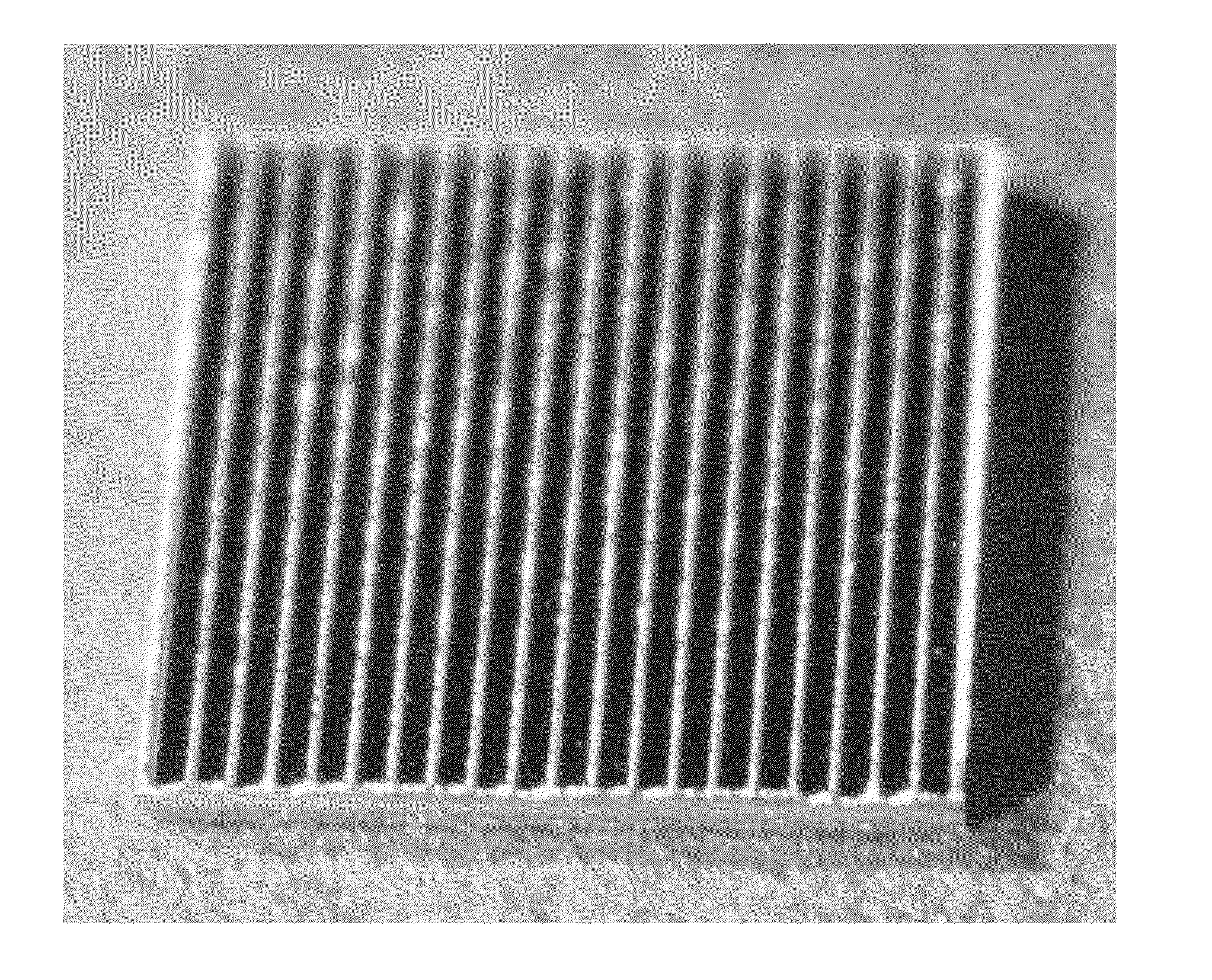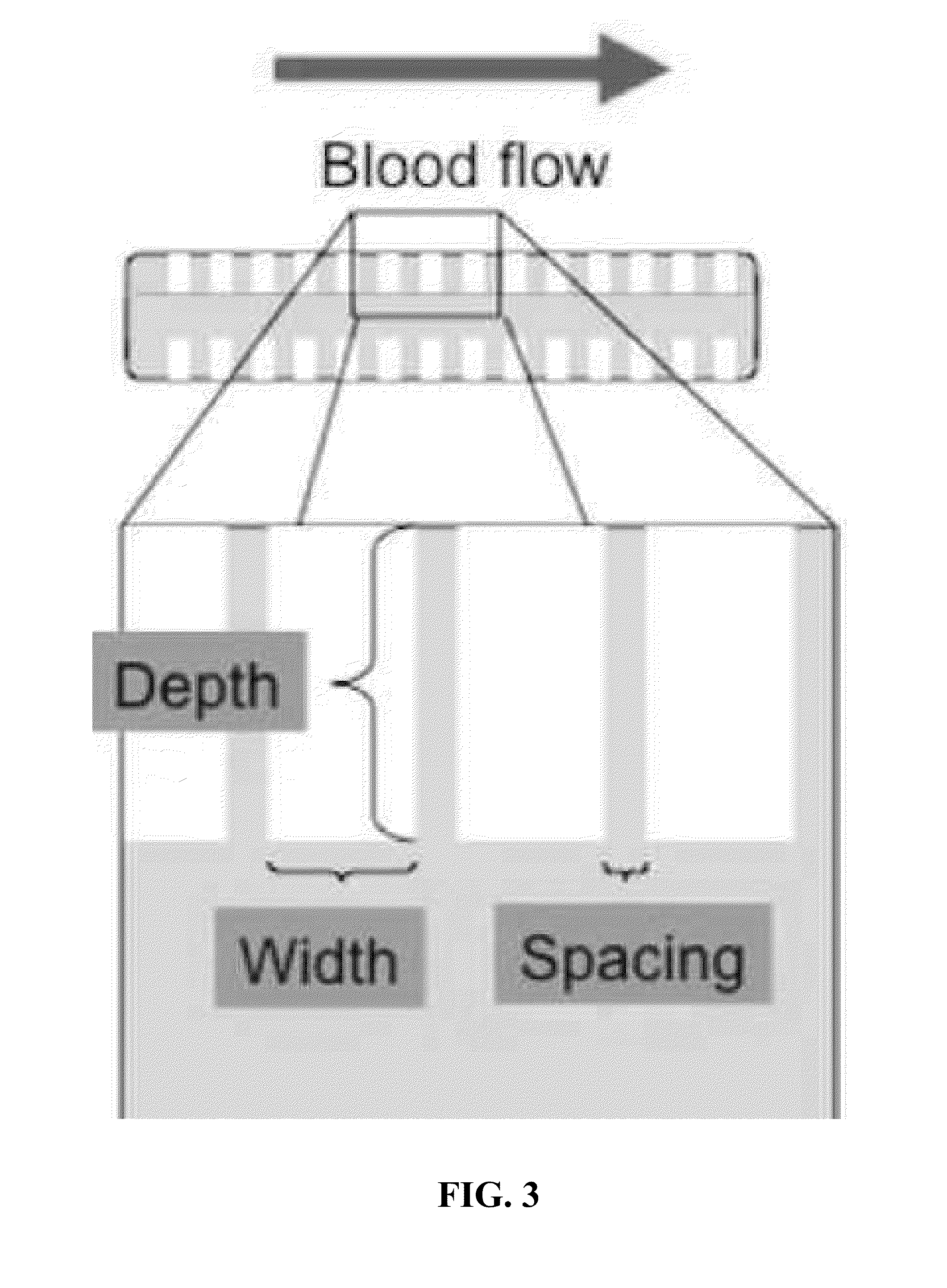Biomedical implant for use in fluid shear stress environments
a biomedical implant and environment technology, applied in the field of biomedical implants and biomedical implants, can solve the problems of delaying the clinical trial of anticoagulant therapies, affecting so as to improve the clinical trial results, promote cell survival, and promote cell adhesion. , the effect of enhancing cell growth
- Summary
- Abstract
- Description
- Claims
- Application Information
AI Technical Summary
Benefits of technology
Problems solved by technology
Method used
Image
Examples
example 1
Cellular Niche Generation Via Micro-Patterning of Biomedical Implants
[0083]This example describes one embodiment of a biomedical implant according to the present invention. Given that one goal of the present invention was to develop way to decrease fluid shear stress, a prototype of the present invention has been developed for a prosthetic heart valve. The prototype itself is made of material that resembles synthetic heart valves, and was simplified to a square shape for ease of development and testing.
[0084]The material used to generate the sample was a 4″ Silicon wafer that was 1000 um thick; 1 cm×1 cm chips were made for testing out of the 4″ wafer (FIG. 1). The pattern to be etched into the silicon was developed following CAD analysis of blood flow over etched surfaces. This geometry was chosen in particular because of its ability to decrease the shear stress caused by blood to levels within a range where endothelial cells can function normally.
[0085]Optimization of the etched g...
example 2
Mechanical Heart Valve Surface Optimization for Endothelial Cell Adhesion
[0090]Endothelial cells line the vascular system of the human body. Current heart transplant options do not incorporate this vital vascular lining; endothelialization. Biological valves pose little foreign body response from the immune system and can be implanted with little drug assistance, but their drawback is that they require replacement within ten years due to wear. Mechanical heart valves are the alternative as they last forever. The drawback in this case is intense foreign body response from the host; thus, harsh anticoagulants such as warfarin are required for patients with these types of implants. This example was conducted to directly address the problem of endothelialization by seeding endothelial cells onto the surfaces of aortic heart valve implants. The findings show that it is possible to adhere endothelial cells to the surfaces of implanted heart valves, and that with proper topographical adjus...
PUM
 Login to View More
Login to View More Abstract
Description
Claims
Application Information
 Login to View More
Login to View More - R&D
- Intellectual Property
- Life Sciences
- Materials
- Tech Scout
- Unparalleled Data Quality
- Higher Quality Content
- 60% Fewer Hallucinations
Browse by: Latest US Patents, China's latest patents, Technical Efficacy Thesaurus, Application Domain, Technology Topic, Popular Technical Reports.
© 2025 PatSnap. All rights reserved.Legal|Privacy policy|Modern Slavery Act Transparency Statement|Sitemap|About US| Contact US: help@patsnap.com



